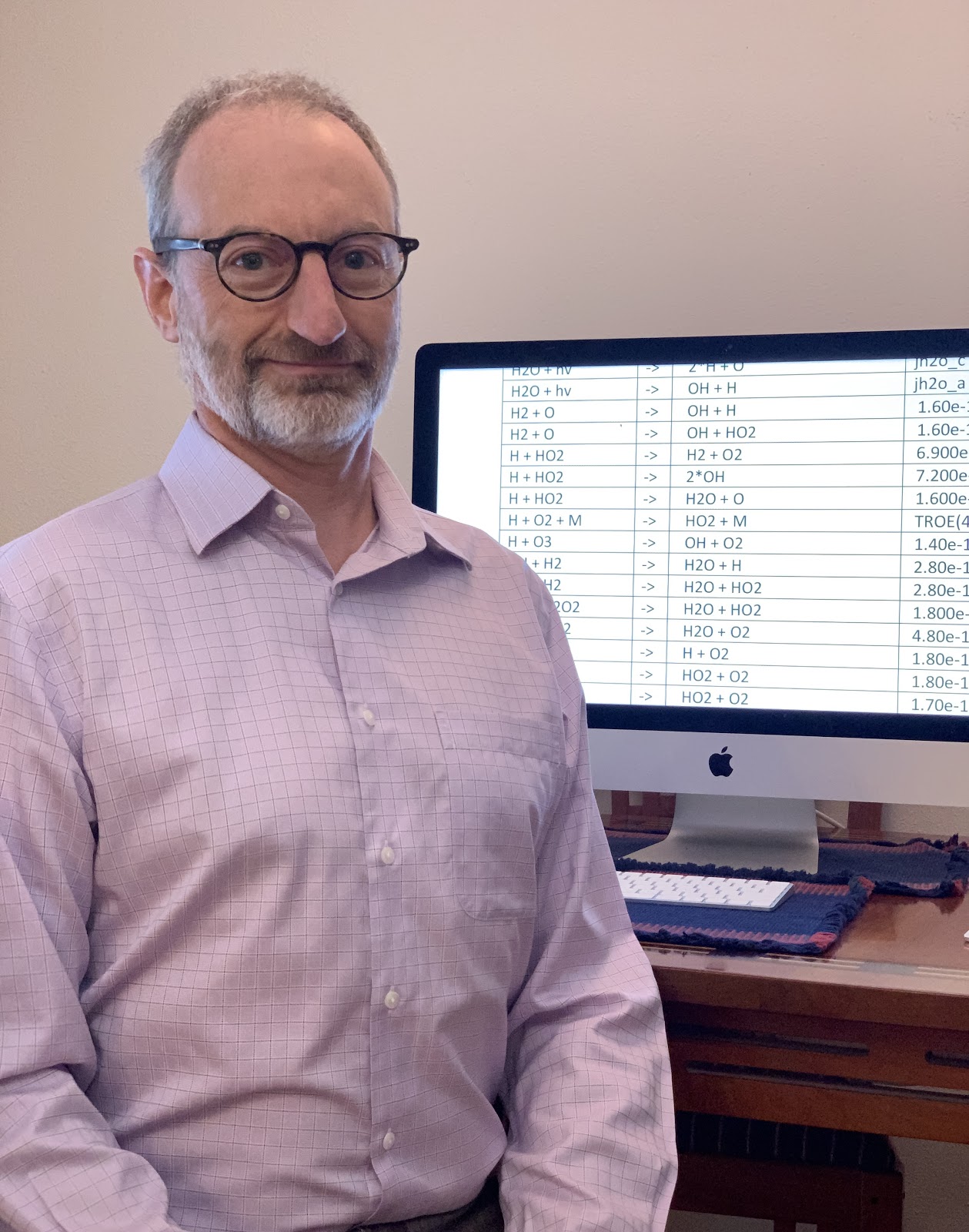Profile in Science: Andrew Conley
Andrew Conley is surrounded by chemistry. ACOM laboratory FL-0 is home to several state-of-the-art chemistry laboratories, his office neighbors down the hall are accomplished researchers in atmospheric chemistry, and ACOM runs nightly forecasts of chemical weather based on models WACCM and WRFChem. Andrew is the Lead Technical Model Developer for the Multi-Scale Infrastructure for Chemistry and Aerosols (MUSICA), which is being developed along with companion tools such as the Chemistry Café and the Model-Independent Chemistry Module (MICM). And yet, Dr. Conley has never taken a course in Chemistry. What career path led him to Atmospheric Chemistry Observations & Modeling (ACOM)?
Andrew graduated with a B.A. in Physics from Washington University in St. Louis in 1987. He then went to graduate school at California Institute of Technology in Pasadena, earning his PhD in Applied Mathematics in 1994. His dissertation analyzed the solutions of the Navier-Stokes equations using computers. After Caltech he was the Wilkinson Fellow at Argonne National Lab. His interest in education led him to be a high school teacher for a couple of years before returning to software development as an independent consultant in the Boulder area, tracking financial information and evaluating portfolio risk for traders of electricity commodities. At the same time, Andrew held a long-term concern for the environment but knew little of the science behind climate change. In 2001 he applied for a job posting at NCAR’s Climate & Global Dynamics (CGD) that called for math and computing skills, hoping to learn more about global warming at a deeper level than provided by the general news media. His expertise in numerical analysis for differential equations and parallel computation was applicable to many of the problems solved in climate models at NCAR.
Andrew began work with Bill Collins and Jeff Kiehl at CGD in November 2001. His first assignment was to make plots of Aerosol Optical Depth (AOD), leading to more interesting problems in radiative transfer. When Bill Collins left, Jean-Francois Lamarque offered to take Andrew on at NCAR’s Atmospheric Chemistry Division (ACD, now ACOM). Andrew found the interaction of chemistry and climate to be fascinating, even if he knew little about chemistry itself. Fortunately he had excellent teachers among the scientists at ACD, and found it enjoyable to learn about the composition of the earth’s atmosphere and the chemical/aerosol processes that drive its composition. UCAR expects all staff to learn on the job.
These days he is interested in developing software that supports the complexity of the code used in simulations of atmospheric chemistry. As Project Manager, Andrew enjoys his work with three Software Engineers. Programming languages have changed since his graduate school days at Caltech on the IBM SP-1 computer 26 years ago! While languages were then focused on efficiency of computation, they now also support much more complexity. He enjoys clarifying the scientific needs for the code, budgeting and planning the next development stages, coordinating the efforts of the Software Engineers, providing more efficient and intuitive ways of working with the software, and thinking about sustainability of software design and development patterns.
For now, Andrew Conley’s work on MUSICA is keeping him very busy. For the future, he expects this development project to contribute to UCAR’s understanding of the environment. He expects MUSICA to drive discoveries across a range of time and space scales - everything from pollution in areas of cities to the evolution of the composition of thermosphere. From Navier-Stokes equations to ozone formation, Andrew’s career path has combined his formal academic education with informal on-the-job learning to position UCAR at the forefront of atmospheric modeling.

Figure 1. Andrew Conley with a chemical mechanism generated from the Chemistry Café. Chemistry Café is used in simulations of tropospheric and stratospheric chemistry; it was constructed by Louisa Emmons.